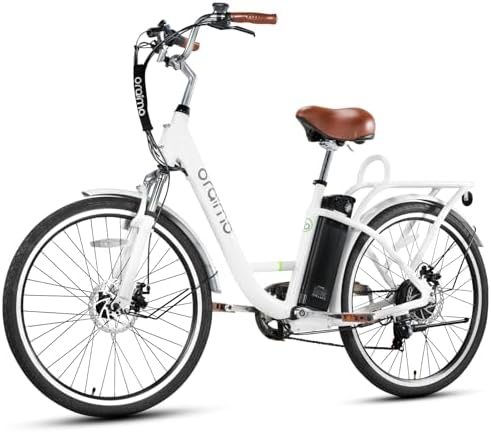How long does it take to bike 5 miles

When you hear the word “bike,” what comes to mind? Maybe someone is cruising around on a leisurely ride on their bike. Maybe you think of an older man pedaling furiously up a hill. However, the bike you see most likely has not been ridden in years. In fact, the average American only uses their bike for an average of 1.5 miles per day! That may not seem like much, but when you break it down, a lot of small distances add up over time. Biking is a great way to do so if you’re looking to increase your daily activity and burn more calories. But before you saddle up on your trusty steed, be sure to read this blog post about how long it takes to bike 5 miles. This information will help you get started and keep you motivated as you pedal along.
Bike Setup
Biking is an excellent way to get exercise and stay healthy. It can be done in various ways, from riding on flat ground to going uphill. The most important factor when bike riding is how you set up your bike. Make sure the bike is adjusted properly and that you are wearing the right gear. Here are some tips to help get started:
Get a good bike
You don’t need the most expensive bike, but you do need a good one. Bike companies make different types of bikes for different types of riders, so it’s important to find one that is comfortable for you. Try out a few before you buy them, so that you know which size and type fits best.
Get the right gear
You’ll also need the right gear for biking. Make sure to wear clothes that will keep you warm, such as boots or rain pants, and clothes that will protect you from the sun or wind. Bring a water bottle and snacks if you’re going for a long ride.
Adjust your bike
Once you’ve got your bike set up the way you want it, make sure to adjust it so it’s comfortable. To do this, loosen all the bolts on your frame until they’re slightly loose (this will allow your body to move more), then tighten them back up using your hands or a socket wrench.
Bike Types
As a cyclist, you probably have more than one bike type in your garage. When choosing the right bike for you, it’s important to consider your riding style, size, and weight. Here are some of the most common types of bikes and how long it takes to ride them:
Road Bikes:
Road bikes are designed for fast rides on paved roads. They can be used for both recreational and competitive cycling. These bikes typically have wider tires that provide good stability and grip. They also have a low center of gravity which makes them easier to control. Road bikes typically take about 30 minutes to cycle a mile.
Track Bikes:
Track bikes are designed for cyclists who want a more challenging ride. They are built for speed, distance, and efficiency on smooth tracks or race circuits. Track bikes usually have narrower tires that offer better traction but less stability. To compensate, track bikes often feature a higher center of gravity which makes them harder to pedal but easier to stay upright on the track. Track bikes typically take about 45 minutes to cycle a mile.
Hybrid Bikes:
A hybrid bike is a combination of two different bike types: road and mountain biking styles. Hybrids allow cyclists to enjoy the best features of each type of bike without sacrificing stability or comfort on rougher terrain or long rides. Hybrids typically have wider tires that provide good traction and stability on pavement while also providing good handling when travelling off-road or over hills.

Bike sizes and heights vary, so it can take different lengths of time to bike the same number of miles. For a basic guideline, here are some average bike riding times for different height and size cyclists:
5’1″ or under: 30 minutes
5’7″ to 5’11”: 1 hour
5’2″ to 5’6″: 45 minutes
5’12” and up: 1.25 hours
Bike Gear
Cycling is a great way to get exercise and see the sights. However, it’s not just about pedaling—you also need the right gear to make the ride comfortable and enjoyable We’ll talk about some of the greatest bike equipment for riders of all skill levels in this article.
If you’re just starting out, we recommend opting for basic bike gear like a helmet, cycling gloves, and a water bottle. As you become more experienced, you can upgrade to specialized gear like a bike saddle that’s comfortable and fits your body well, or a cycling GPS watch that helps you track your progress while on the road.
Whatever level of cyclist you are, make sure to have the correct gear when hitting the trails or streets!
Bike Rides
Cycling is a great way to get your daily exercise. Additionally, it’s a fantastic way to explore the city and its neighbourhoods. Generally speaking, you should bike at least 20 miles every day. That means if you plan on biking 50 miles per week, it will take you about five days. However, cycling can be faster or slower depending on your environs. Here are some tips for getting the most out of your cycling experience:
– Make sure that you have the right gear. You need good shoes and clothes to protect yourself from the weather and other cyclists.
– Get comfortable with riding in traffic. This may mean riding in the middle of the lane or taking some safety precautions, like using a light at night or wearing a helmet.
– Plan ahead! This includes knowing where you’re going and mapping out your route so that you don’t get lost.
– Take breaks when needed! Cycling can be hard work if you don’t take breaks every now and then.
Bike Maintenance
Biking is a great way to get your daily exercise, and it’s also a very efficient way to travel. A bike can take you anywhere you want to go in a relatively short time, and the amount of exercise you get is pretty comparable to what you would get if you were walking or running.
The good news is that biking doesn’t require a lot of maintenance. In fact, most of the work involved in keeping your bike running smoothly can be done while it’s parked at home or at the office. Here are five tips for keeping your bike in top condition:
Check Your Tires Regularly
One of the most important things you can do to keep your bike running smoothly is to check your tires regularly. Make sure they are properly inflated, and replace them if they begin to degrade or exhibit damage.
Clean Your Bike Regularly
Just like your car, your bike needs to be cleaned regularly if it’s going to look and perform its best. Remove all the dirt, dust, and grease using a degreaser or cleaner designed for bikes, and then dry it off thoroughly before storing it away.
Adjust Your Bike Gear Train Regularly
Gears will become loose over time if they’re not tightened properly. To adjust them, open up the chainring by removing one of the screws that holds it on, then tighten or loosen each gear according to how tight or
Factors that effect the speed
There are many factors that can affect the speed of a bicycle ride. The terrain, rider weight, bike fit, and weather can all have an impact.
Terrain:
A bike’s ridden on flat or rolling terrain will travel at a different rate than on hilly or mountainous terrain. Bicycles ridden on level ground are limited by the friction between the tires and the road surface. In hilly or mountainous terrain, riders use more power to pedal because they need to overcome resistance from the incline. This extra power requires more energy to keep the bike moving, which slows it down.
Rider Weight:
More weight translates into more resistance against the pedals, which in turn slow down the bike. It is important to match the weight of a rider and their bike for proper balance and speed.
Bike Fit:
A properly fitted bicycle provides an even platform for both feet and allows for efficient pedaling. improper bike fitting can cause excessive drag and make it difficult to stay with a group or go as fast as possible. For optimal cycling performance, consult with a professional cycling coach before buying or upgrading your equipment.
Weather:
The weather conditions can also have an impact on how quickly a cyclist travels. If it’s wet outside, bikes will get heavy very quickly due to water being absorbed by the tires; if it’s cold outside, cyclists will fatigue faster because their bodies generate less heat when cycling indoors than outdoors.





